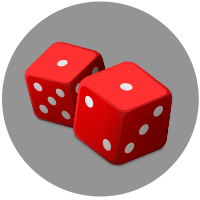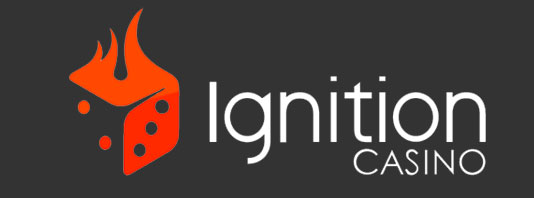- Slots
- Blackjack
- Roulette
- Live Dealer
- Baccarat
- Great selection of slots
- High-quality live dealer games
- Excellent welcome bonus
- Crypto-friendly
Betonline.ag
- Slots
- Blackjack
- Roulette
- Live Dealer
- Baccarat
- Licensed in Panama
- Great brand reputation
- Multiple gaming options
- Wide range of payment methods
- Slots
- Blackjack
- Roulette
- Live Dealer
- Baccarat
- 300+ games
- Crypto-friendly casino
- Live dealer jackpot
- Bonus galore for different verticals

Craps’ everlasting appeal mainly comes from the camaraderie-based vibe it creates on land-based casino floors but also from the low house edge.
However, getting those player-friendly odds is highly circumstantial since the payback percentage on craps wagers varies widely. Some bets in craps have a house edge as low as 1.36%, while others are literally the worst wagers you can make in casinos.
This brings us to the crux of this article — the odds and probability associated with different craps bets. Understanding the math behind craps will put you in the best position to beat the house consistently.
There’s a lot to unpack here, given the wide house edge spread between different bets and the number of possible combinations you can get from each roll. But with some practice and pointers from our guide, you’ll have no trouble picking up this stuff.
Odds and Payouts in Craps
The table below illustrates the house edge, true odds, and payouts for every craps bet. Casino veterans and advantage players know this stuff like the back of their hands, but you don’t have to memorize it if you intend to play online. Instead, bookmark this page and use it for reference next time you hit the tables.
| Wager | House Edge | Payouts | True Odds |
|---|---|---|---|
| Pass Line/Come | 1.414% | 1:1 | 251:244 |
| Don’t Pass/Don’t Come | 1.36% | 1:1 | 976:949 |
| Pass Line Odds 4 or 10 | 0 | 2:1 | 2:1 |
| Pass Line Odds 5 or 9 | 0 | 3:2 | 3:2 |
| Pass Line Odds 6 or 8 | 0 | 5:6 | 5:6 |
| Don’t Pass Odds 4 or 10 | 0 | 1:2 | 1:2 |
| Pass Line Odds 5 or 9 | 0 | 2:3 | 2:3 |
| Pass Line Odds 6 or 8 | 0 | 5:6 | 5:6 |
| Hard Ways 4 or 10 | 11.1% | 7:1 | 8:1 |
| Hard Ways 6 or 8 | 9.09% | 9:1 | 10:1 |
| Place Bets 4 or 10 | 6.7% | 9:5 | 2:1 |
| Place Bets 5 or 9 | 4.0% | 7:5 | 3:2 |
| Place Bets 6 or 8 | 1.52% | 7:6 | 6:5 |
| Any Craps | 11.1% | 7:1 | 8:1 |
| Any 7 | 16.9% | 4:1 | 5:1 |
| Aces | 13.9% | 30:1 | 35:1 |
| Midnight/Boxcars | 13.9% | 30:1 | 35:1 |
| Ace-Deuce | 11.1% | 15:1 | 17:1 |
| Yo/Eleven | 11.1% | 15:1 | 17:1 |
Dice Combinations

Craps is a game played with a pair of dice, each of which has six sides. This means that there are 6×6=36 combinations a shooter can throw in each roll.
Combinations have varying chances of being hit. The probability of rolling snake eyes is 2.77% since there is only one possible way to roll this number. In contrast, there are seven ways to roll a 7, which makes it more likely (16.66%).
As with other casino games, the frequency of an event (in this case, a number rolling) affects the odds. The higher the probability that a number will get rolled, the lower the payout — and vice versa.
Knowing the statistics behind craps is important since hit frequency and payouts are correlated. It is important to learn the different combinations and their chances of being hit so you can work out the odds and develop a betting strategy that fits your budget.
The following table shows the chances of each possible roll combination.
| Number | Combination | Number of ways it can get rolled | Chance of getting rolled |
|---|---|---|---|
| 2 | 1+1 | 1 | 2.77% |
| 3 | 1+2;2+1 | 2 | 5.55% |
| 4 | 1+3;2+2;3+1 | 3 | 8.33% |
| 5 | 1+4;2+3;3+2;4+1 | 4 | 11.11% |
| 6 | 1+5;2+4;3+3;4+2;5+1 | 5 | 13.88% |
| 7 | 1+6;2+5;3+4;4+3;5+2;6+1 | 6 | 16.66% |
| 8 | 2+6;3+5;4+4;5+3;6+2 | 5 | 13.88% |
| 9 | 3+6;4+5;5+4;6+3 | 4 | 11.11% |
| 10 | 4+6;5+5;6+4 | 3 | 8.33% |
| 11 | 5+6;6+5 | 2 | 5.55% |
| 12 | 6+6 | 1 | 2.77% |
Understanding House Edge in Craps

If you want to calculate the house edge on specific craps bets, you need to know the true odds for those rolls — the probability of each roll’s outcome. Suppose the true odds for a given roll are 3:1. This indicates that for every time you win a bet on that roll, you should theoretically lose three times.
The house edge is the difference between the probability of a roll winning and the payout associated with that roll.
With “odds” bets, the true odds and payouts are equal, so these bets have zero house edge. However, casinos impose specific rules to offset this — a maximum amount you can stake on these bets.
Conclusion
To play craps effectively, you must understand the math behind the bets: their probability and payout odds and, thus, their house edge. Based on this data, you can determine what betting strategy works best for you.



